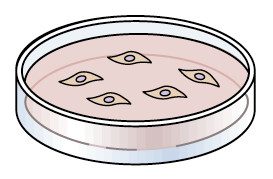The virus triggers cell division via the mitotic mechanism. The mitotic mechanism makes a copy of the original cell including the virus.
I’m no virologist (it’s been 25 years since I did undergrad microbiology), but that’s not my understanding of viruses that infect mammalian cells. My understanding is that viruses proliferate by subverting (hijacking, if you will) the machinery of the cell cycle but don’t actually stimulate the cell cycle. It’s the reverse – they stall, or at least slow, the cell cycle by associating with cell cycle components, like cyclins and cyclin-dependent kinases, and using them to drive the protein replication pathways in order to make new viral particles.
If we destroy the cells mitotic (MTOC) centers, the cell cannot divide and dies, killing the virus in the process.
Hmmm. Mitotic inhibitors are quite toxic and produce a variety of very unpleasant side-effects. They are used as anti-cancer drugs where the side-effects are not as bad as the alternative. Look up drugs like paclitaxel, docetaxel and vincristine. I don’t see them as a viable general anti-viral medication.


